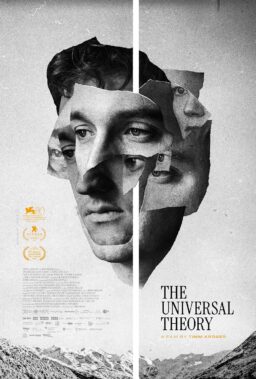The following article was originaly published on February 23rd, 2016, at Joyce Kulhawik's blog, Joyce's Choices.
It's a quiet time of year for movie releases after the blockbusters of summer and the Oscar contenders of fall. It's the perfect time to think "silents." We can't actually hear them sighing in ecstasy, but it isn't hard to imagine from those shimmering "pictures" what was happening on the "silver screen" back in the early days of film when actual silver was embedded in the screen making it highly reflective and bathing the images in that supernal glow. Herewith a selection of sexy silent films featuring some of the screen's biggest stars in some of their most indelible moments.
For me, nothing on the silent screen comes closer to romantic/erotic perfection than the great Greta Garbo (she and I share a birthday…) opposite her real life inamorata and first time co-star John Gilbert (She stranded him at the alter!) in 1926's "Flesh and the Devil." The following scene captures the 21 year-old Garbo with her weary, sultry beauty, his impossible ardor, and their almost tactile chemistry. What I remember most is the play of light and shadow on their faces, her shoulders glowing in the moonlight under a diaphanous gown, the strike of a match, then surrender to a ravenous kiss. How they handle that unlit cigarette (long before Bette Davis and Paul Henreid in "Now Voyager") seems nothing short of forbidden.
And then there is Louise Brooks. French film historian Henri Langlois who influenced French New Wave cinema of the 1950's said, "There is no Garbo! There is no Dietrich! There is only Louise Brooks." Dubbed "The Girl in the Black Helmet" by critic Kenneth Tynan, Brooks was a hollywood renegade with her patent leather-like bob (clearly channeled by Downton Abbey's Michelle Dockery as Lady Mary) milk white skin, and flagrant eroticism. She hated Hollywood and didn't come into her own until making two films in 1929 in Germany for G.W. Pabst: "Diary of a Lost Girl" and "Pandora's Box" in which she plays the temptress "Lulu" who, true to her mythic roots, unleashes all the evils of the world, destroying herself and everyone attracted to her. Among the most erotically charged scenes in "Pandora's Box" are those with her co-star Fritz Kortner whom she said "hated" her. "One sequence gave Kortner an opportunity to shake me with such violence that he left ten black-and-blue fingerprints on my arms."
The following clip from "Pandora's Box" is one of the cinema's earliest scenes depicting lesbian attraction as Lulu torments her lovers while she dances with a woman.
But the woman who laid down the template for the deadly female of the species was Theda Bara, who silently immortalized the words "Kiss me, my Fool." He does, he dies, and the first femme fatale was born with the release of 1915's "A Fool There Was." Theda was the original "Vamp," as in "vampire," who sucked the life out of men who came within reach. Ms Bara, was not a classic beauty (almost bug-eyed and certainly thick-jawed) but her image packs a wallop and conjures up the sexual mayhem of a dark woman's power. Her long locks falling along with her clothes, she must have presented a potent image of predatory femininity to early movie audiences. All but six of her 40 films have been lost including everything but a few fragments of one of her biggest hits 1917's "Cleopatra" (the studio cited her name as an anagram for "Arab death"). So feast your eyes on this scene from "A Fool There Was," about a wanton woman who ensnares a respectable diplomat and family man (Edward Jose) who is inescapably reduced to a drug-addicted heap.
Meanwhile in Italy a dramatic and erotically expressive diva was beginning to mesmerize audiences the world over with her charisma and dramatic gifts. Pina Menichelli came from a family of actors and honed her skills in the theater. She burned up the screen in 1915 in director Giovanni Pastrone's aptly named "Il Fuoco" ("Fire") a tale of an all-consuming love affair between an artistocrat and a poor painter. Her next film, a huge hit "Tigre Reale" starred Menichelli as a Russian countess in love, whose passionate past catches up with her, and everything of course goes up in flames. Literally. Check out the kiss at the end of this scene between the voluptuous Pina and her lover at the Opera. Afterwards, she will begin to literally consume a bouquet of flowers.
But it is here in 1918's La moglie di Claudio (Claudio's wife) that we see Menichelli packing the erotic charge of a woman, wholly in command of her sexuality as she unravels her hair, stares boldly at us through the camera, and uses her entire body to convey the emotions that grip her as we watch in the dark. This film was banned in Italy because Menichelli was reportedly "troppo…affascinante!"("too…fascinating!"). It is hard not to stare.
Finally it's back to the future in Fritz Lang's 1927 German expressionist sci-fi classic "Metropolis" set in 2026! "Metropolis," the eponymous utopian city, is a tale of class warfare and in the following scene a robot disguised as the heroine/love interest Maria (Brigitte Helm) is used as a tool of the state to stir up discord among the rich young Metropolitans. As she leads a provocative exotic dance, the oh-so-civilized gents in their white tie and tails, pick up the scent and begin to rabidly salivate and lick their lips aroused beyond all reason by the pasties and pelvic gyrations. Though the film is hugely influential thematically and technically, this particular scene–though it has narrative value– is a real sign of the times. Prepare to crack up.












